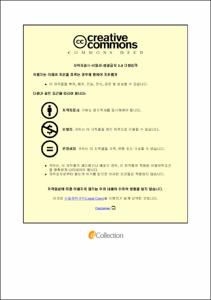초음파 내시경 유도하 바늘 관통 생검의 임상적 유용성, 합병증 및 합병증의 위험인자 평가
- Alternative Title
- Clinical outcomes, complications, and risk factors for comorbidities of EUS-guided through-the-needle biopsy in pancreatic cystic lesions in a large cohort
- Abstract
- Background and aims: The incidence of pancreatic cysts has been increasing in recent years. However, accurately distinguishing between these cyst types using current diagnostic methods remains challenging. Surgical intervention for cysts without a precise diagnosis can pose unnecessary risks. Therefore, additional diagnostic approaches such as EUS-guided through-the-needle biopsy (TTNB) have garnered attention. While EUS-TTNB has shown promise in diagnosing pancreatic cysts, concerns have arisen regarding its safety due to adverse events (AEs). This study aims to evaluate the effectiveness, diagnostic yield, performance, and clinical utility of EUS-TTNB, as well as investigate adverse events and the factors associated with them.
Methods: This study analyzed prospectively collected EUS-TTNB records from Asan Medical Center in Seoul, South Korea, focusing on patients who underwent EUS-TTNB for pancreatic cyst diagnosis from January 2019 to September 2023.
Results: Of the 301 patients who underwent EUS-TTNB, tissue was successfully obtained in 300 cases, resulting in a 100% technical success rate. The diagnostic yield of EUS-TTNB was 80%, and when compared with surgical pathology, a high accuracy rate was observed (87.5%, 42/48). Its clinical usefulness led to changes in the diagnosis and subsequent management for 49 patients. (16%, 49/301). Adverse events occurred in 19% of cases, with acute pancreatitis (14%, 42/301) being the most common complication. The rate of moderate to severe acute pancreatitis cases, which occasionally required procedures or led to extended hospital stays, was significant. In multivariable analysis, IPMN diagnosis was identified as a significant risk factor for acute pancreatitis. (OR 4.69 [95% CI 2.21 - 9.96]; p < 0.001)
Conclusions: EUS-TTNB demonstrated high technical and diagnostic success rates, offering clinical utility by altering diagnoses and influencing therapeutic decisions. However, the procedure carries a risk of complications, especially acute pancreatitis, with IPMN diagnosis being a significant risk factor. Therefore, careful consideration and patient selection are essential when deciding to perform EUS-TTNB, weighing the benefits of accurate diagnosis against the associated risks. Further research is needed to prevent severe pancreatitis following EUS-TTNB. Key Words: EUS-TTNB, Post-TTNB pancreatitis, risk factors of post TTNB complication
- Issued Date
- 2024
- Awarded Date
- 2024-02
- Type
- Dissertation
- Alternative Author(s)
- LEEHOSEUNG
- Affiliation
- 울산대학교
- Department
- 일반대학원 의학과
- Advisor
- 송태준
- Degree
- Master
- Publisher
- 울산대학교 일반대학원 의학과
- Language
- eng
- Rights
- 울산대학교 논문은 저작권에 의해 보호받습니다.
- Appears in Collections:
- Medicine > 1. Theses (Master)
- 파일 목록
-
-
Download
 200000737202.pdf
기타 데이터 / 1.42 MB / Adobe PDF
200000737202.pdf
기타 데이터 / 1.42 MB / Adobe PDF
-
Items in Repository are protected by copyright, with all rights reserved, unless otherwise indicated.